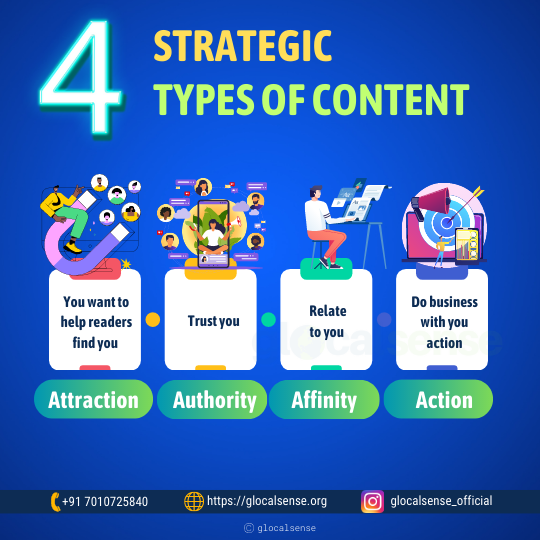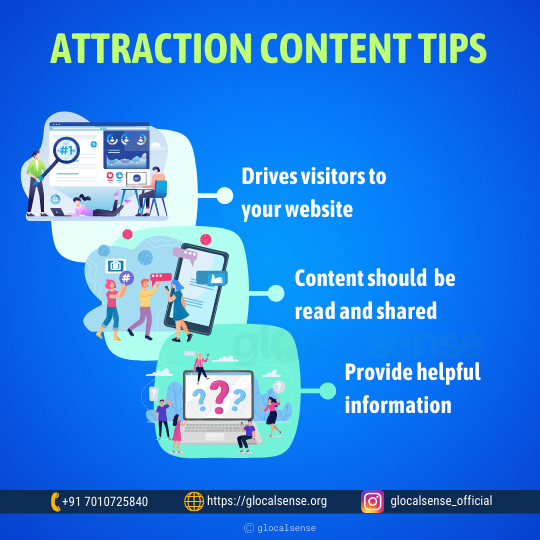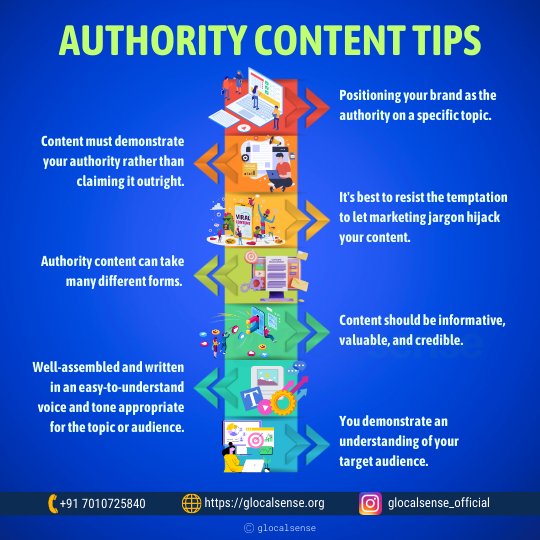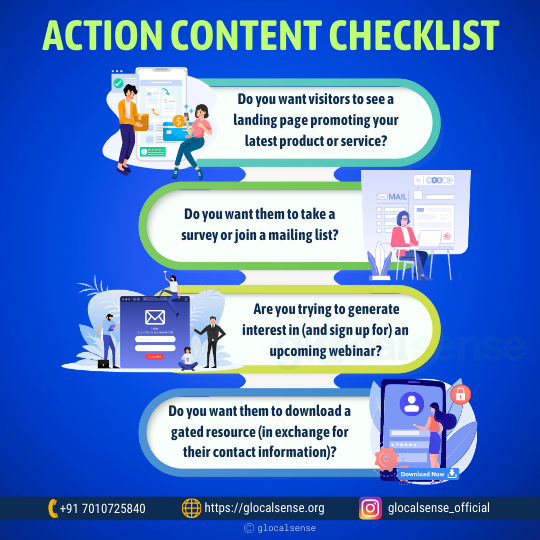The Content Marketing Institute defines content marketing as “a strategic marketing approach focused on creating and distributing valuable, relevant, and consistent content to attract and retain a clearly-defined audience—and, ultimately, to drive profitable customer action.”
Content marketing is about making your website and brand stand out from the crowd, increasing brand awareness, and helping you stand out when a prospect or customer is ready to make a decision. Creating content that attracts readers, establishes you as a credible authority, appeals to the reader’s emotions or worldview, and inspires action (creating customers). There are four types of content to write: attraction, authority, affinity, and action.
The 4 Strategic Types of Content
It is important to note that the four content categories—attraction, authority, affinity, and action—do not have to be mutually exclusive. A single piece of data will frequently fit into multiple categories.

Using all four types of content on your website successfully allows you to charge higher costs for your services and more for your products.
- This is what encourages people to link to your content (without you even having to ask).
- It’s how you get guest posting opportunities that you previously thought were out of reach.
- It’s how you get social media influencers to share your content.
These people will become customers, but more than just customers – they will become fans, supporters, fans, and even friends.
Attraction Content
Content is meaningless if no one recognizes it—attraction content drives visitors to your pages, laying the foundations for your content strategy. Attraction content blogs are intended to be read and shared, and sharing drives additional traffic to your site.
The idea is to provide helpful information—something you know people are looking for—for free. As a result, more eyes are drawn to the content as they read and share it.
Some examples of attraction content:
- “5 Content Marketing Trends to Watch for in 2023”
- “3 Evergreen Content Tips”
- “8 Reasons Your Posts Aren’t Being Read”

This type of content is popular because it is effective. However, if you’re new to content marketing, don’t assume you know everything about it. Attraction content should entice readers while also providing helpful information. They’re encouraged to act when they reach the end, such as visiting your website or downloading a resource.
Authority Content
Authority content aims beyond attraction by positioning your brand as the authority on a specific topic. What is important about authority content is that you must demonstrate your authority rather than claiming it outright.
It’s best to resist the temptation to let marketing jargon hijack your content. All you need to do is present content that is so informative and credible that you don’t need to claim authority—let the content speak for itself.

Authority content can take many different forms. For example, list posts, content that answers frequently asked questions, provides a solution to a specific problem, and so on, can be considered authority content.
So, how do you demonstrate your authority?
You provide valuable information that is well-assembled and written in an easy-to-understand voice and tone appropriate for the topic or audience. You demonstrate an understanding of your target audience. You broaden your reach when you create exceptional authority content. This occurs when other brands’ content links to yours (implying that they found your content suitably authoritative).
Affinity Content
While authority content is important (because there is no business without trust), affinity content inspires prospects to like or prefer you over the competition. Again, the goal is to connect with readers’ emotions by demonstrating that you are similar to them (or at least understand them).
Affinity content creates you as a brand that the reader not only trusts but also believes in the same things they do or shares their worldview—a brand that they are not only willing to do business with but actively want to do business with.

It’s not always clear where the line between authority and affinity content should be drawn, so here’s one way to think about it. First, assume one of your competitors has written an “authority content” piece that essentially duplicates yours in terms of information and sources.
What will set your post apart from theirs? The emotional resonance with which you connect with your readers. Let readers know what you’re passionate about and what you’re proud of—in other words, demonstrate that you’re just like them.
Action Content
The name of action content, like the names of the other types of content, tells you exactly what it is. The goal of action content is to convert interested readers into customers. To ensure the success of your action content, write it with a specific business goal in mind.
- Do you want visitors to see a landing page promoting your latest product or service?
- Do you want them to take a survey or join a mailing list?
- Are you trying to generate interest in (and sign up for) an upcoming webinar?
- Do you want them to download a gated resource (in exchange for their contact information)?

To increase the chances of a reader taking the action you want, make sure your content makes a compelling case.
For example, suppose you’re trying to get people to sign up for a webinar on ‘How to Succeed in Content Marketing in 2023’. In that case, you could create some content that explains a few significant trends that might cause them to reconsider their content strategy.
Finally, with the four types of content, you want to help readers find you (attraction), trust you (authority), relate to you (affinity) and do business with you (action).
By surfacing what your target customers are searching for online, and where there are opportunities for you to create content that is likely to rank high, the best SEO keyword research tool can demystify the process (due to a lack of already-established, credible content).
